LCAC hovercraft
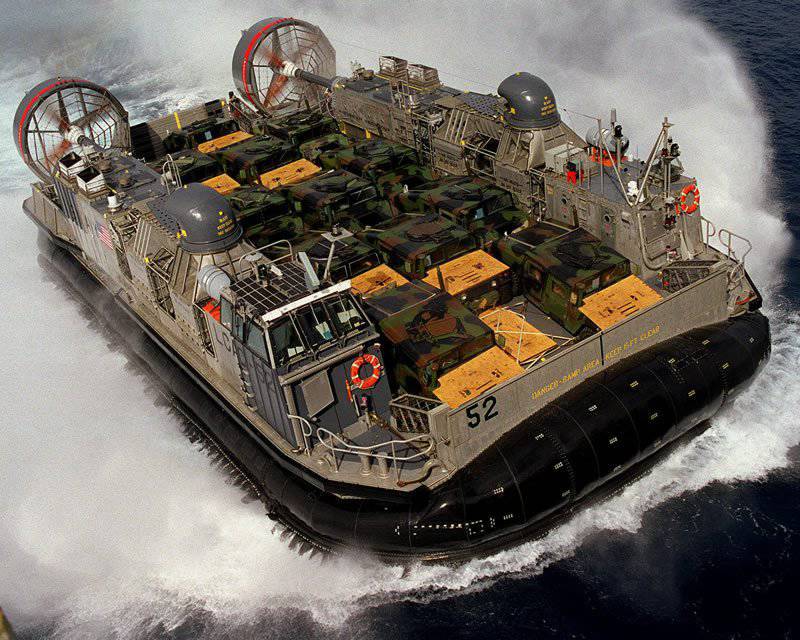
The hovercraft (Landing Craft Air Cushion, LCAC) is a high-speed landing craft with large landing ships docks. It can carry around 68 tons of payload (up to 75 tons in overloaded condition). The boat is used to transport weapons systems, equipment, cargo and personnel from the ship to the shore or along the coastline. The main advantage of the air-cushion landing craft is that LCACs are able to move through swamps and other coastal obstacles, carrying heavy loads such as the Abrams tank M-1 at high speed and can be equipped for transporting personnel to Quantity to 180 people. The LCAC is capable of performing the task regardless of the depth of the water, underwater obstacles, shoals or adverse tides.
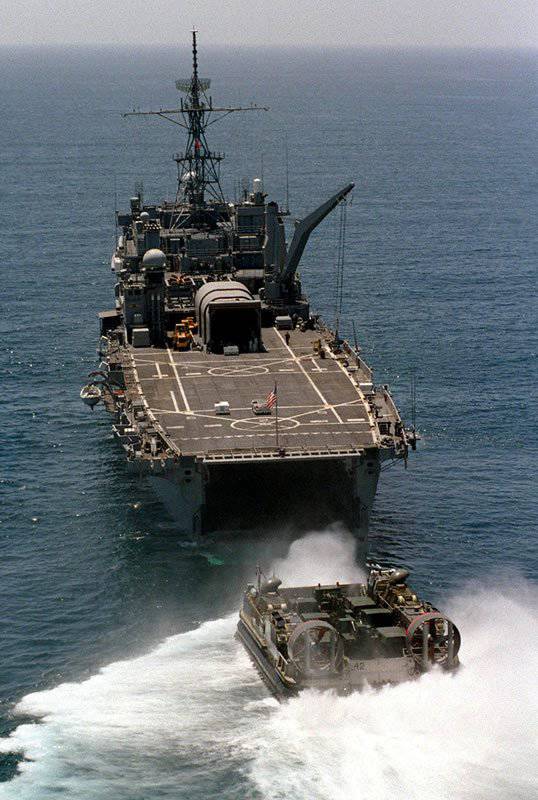
It is able to move on an air cushion, despite obstacles up to one and a half meters in height, and regardless of terrain or topography, including muddy, sand dunes, ditches, swamps, river banks, sleet or slippery and icy coastlines. Equipment such as trucks and tracked vehicles can be unloaded under its own power through the bow and stern ramps, thereby shortening the critical unloading time. Thus, LCAC is able to land troops on 70 percent of the coastline in the world, compared with only 17 percent for conventional amphibious assault ships.
LCACs were designed to meet the need for hovercraft capable of delivering troops, artillery, military equipment, Tanks and other basic elements of military equipment and support equipment on an unprepared shore. These hovercraft are based on a custom-made prototype that underwent comprehensive tests by the U.S. Navy from 1977 to 1981. On June 29, 1987, the LCAC was approved for serial production. In 1989, forty-eight hovercraft landing boats were funded. In 1990, $ 219.3 million was allocated to build another nine boats, in 1991 another 12 LCACs were fully funded. In 1992, 24 boats were funded. As of 2001, the US Navy had delivered 91 LCACs. Boats were manufactured at Textron Marine and Land Systems / Avondale Gulfport Marine. Lockheed shipbuilding company was selected on a competitive basis as the second potential manufacturer. Boats LCAC 1-12, 15-17, 19, 20, 22-26, 28-30, 37-57, 61-91 were built by Textron Marine and Land Systems; 13, 14, 18, 21, 27, 31-33, 34-36, 58-60 Avondale Gulfport Marine.
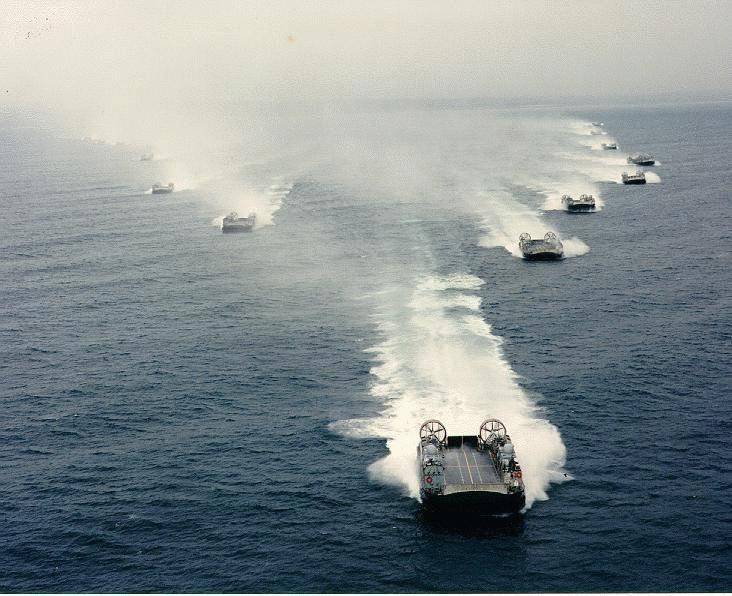
LCAC tests were conducted in Panama City, Florida. Subsequently, LCAC was tested in California, Australia and in Arctic waters. Tests in Alaska in March 1992 included an assessment of the operational effectiveness of LCAC in arctic conditions. During the tests, it turned out that LCACs were not very effective for conducting operations in the Arctic, and even the use of a special kit for cold weather could not change the situation. Tests have also shown that at low temperatures engine power increases to the limit of the gearbox capabilities, but icing and sea conditions neutralize this advantage. Since then, LCAC has been used in two exercises in the Arctic, one of which included operations at temperatures of minus 10 ° C and difficult weather conditions. Based on these exercises, it was decided that there was no need for further trial operation. LCACs have demonstrated the ability to move on thin ice and open water in a fairly calm sea. The distance traveled per exit varied from 4-x to 16-km in one direction. Icing, which occurs under certain conditions, required a periodic interruption of the mission to remove the ice. When tested in the Arctic, JP-5 fuel was used to alleviate problems with clogged filters. In addition, the LCAC participated in a series of trawling exercises, where it proved to be a potentially effective minesweeper in shallow water.
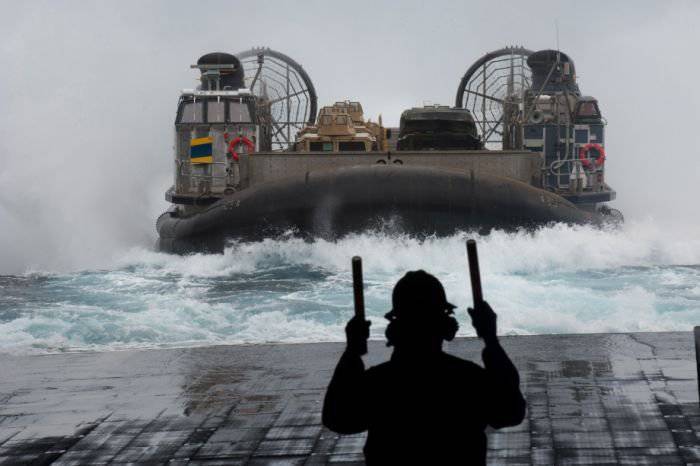
For the first time, LCAC was deployed in 1987, when amphibious boats with board numbers 02, 03 and 04 were taken aboard USS Germantown (LSD-42). In July, 1987 of the year LCAC 04 overcame Buckner Bay in Okinawa and sounded the first landing of the LCAC in a foreign country. The largest LCAC deployment took place in January 1991, when four squads of eleven boats entered the service in the Persian Gulf to support the operation “Desert Storm”.
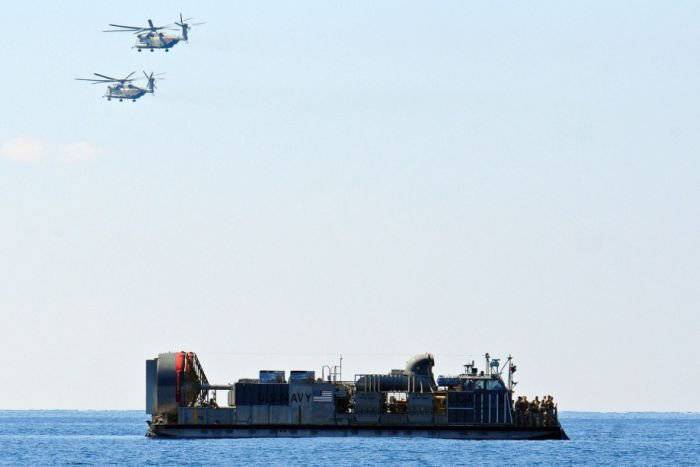
Users of air-cushion assault boats note some similarities between the LCAC and the aircraft. The “pilot” of the boat is located in the “cockpit”, wearing a radio headset. He receives instructions from the air traffic control point located next to the stern gates of the ship-dock. During the flight, the crew feels the same feelings as on an airplane with high turbulence. The pilot controls the Y-shaped steering wheel, his legs are on the control pedals, and he "flies like a puck in the air hockey." LCAC is also similar to a helicopter, it has six dimensions of movement.
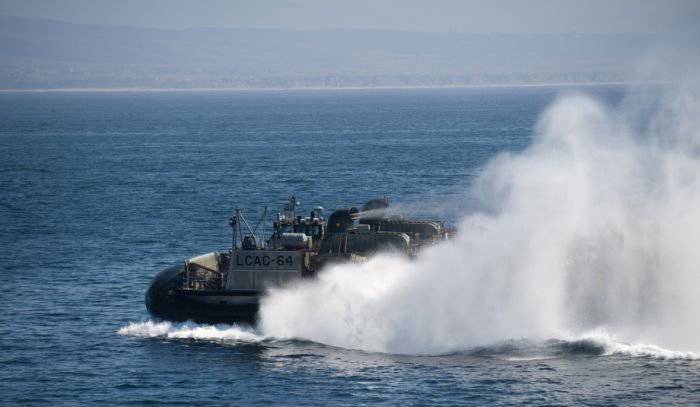
With such an expensive and inherently dangerous machine as LCAC, sound thinking and making the right decisions play a key role. Concerns about the cost of training, forecasts for an increase in the number of LCACs and their crews, as well as high staff turnover in the training units have led the fleet to realize the importance of developing more accurate methods for selecting candidates. Thus, the turnover of operators and engineers has decreased from the initial level in 40% in the 1988 year to the 10-15% at present.
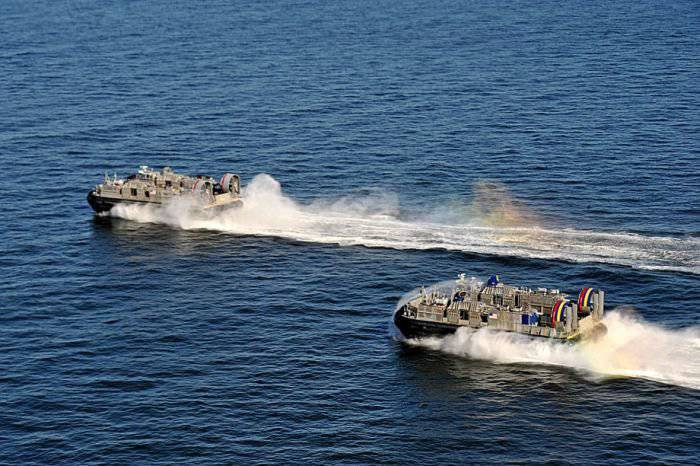
The LCAC had successful combat experience in Somalia, Bangladesh, Liberia, Haiti and Kuwait. He also provided invaluable assistance during disaster management, including tsunamis and hurricanes.
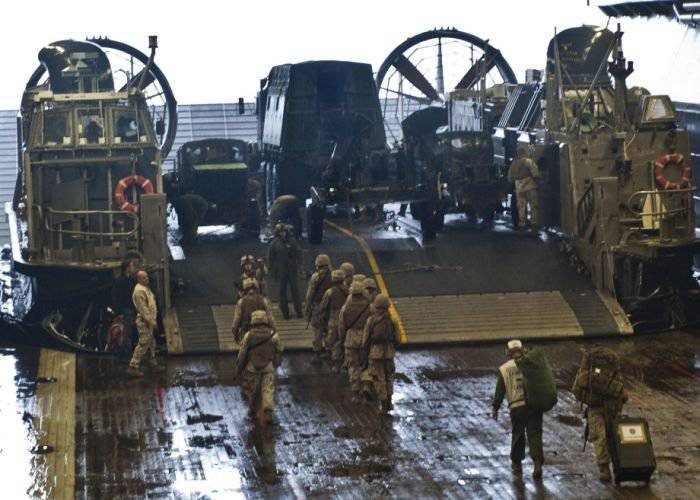
Thirteen years ago, the US Navy decided to upgrade its air-cushion landing craft and extend their life from 20 to 30 years. The real work began in the 2005 year, and today the 30 airborne amphibious assault ships have been modernized, or they are in full swing (seven LCACs are now undergoing this process). The amount of modernization is about $ 9 million each. Another 72 boats are in operation, ten are in reserve (as a replacement), and two are used for research and development. The whole process will take more than ten years.
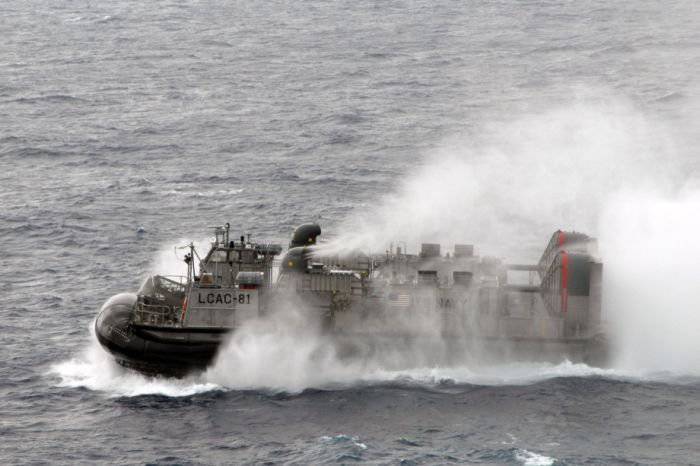
In the course of modernization, the engine is replaced (in those cases where it is possible to avoid replacement, it undergoes a major overhaul), structural elements damaged by corrosion are replaced, and new electronics and other accessories are installed.
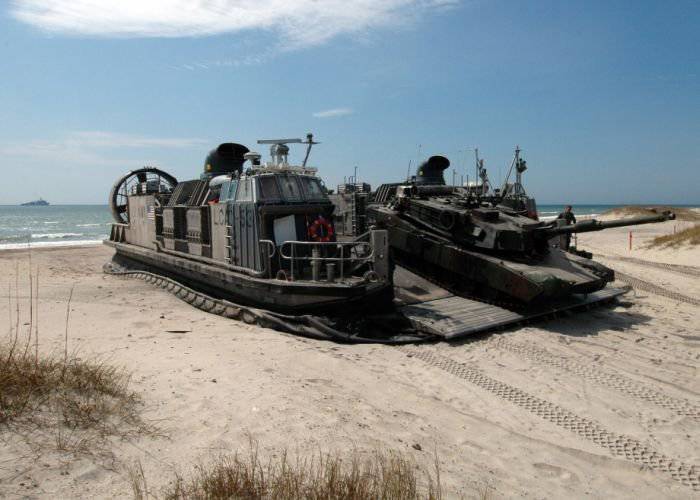
The C4N system (command, control, communications, computers and navigation) has undergone the modernization process, the LN-66 radars have been replaced with more modern and more powerful P-80 radars. A new open-architecture electronics based on modern commercial equipment provides the fastest integration of accurate navigation systems, new communication systems, etc. The new LED screens and LED keyboards consume less energy than the old cathode ray tubes and light-type indicators, and also generate less heat. In combination with the new air conditioner installed in the command post, this provides the crew of the hovercraft with improved working conditions. In addition, the engines were upgraded to the configuration of ETF-40B, providing extra power and lift (this is especially important at temperatures above 40 degrees Celsius), reduced fuel consumption, reduced service intervals.
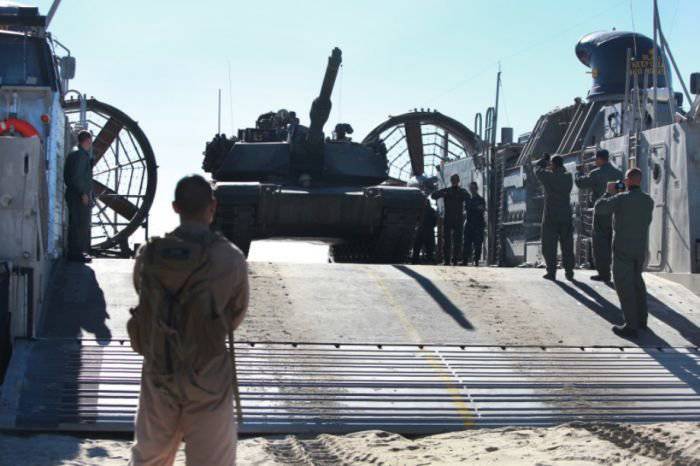
Corrosion elements were replaced with newer, more durable, non-freezing materials. The new skirt of an air cushion reduces drag, increases driving performance over water and land, and also facilitates maintenance requirements. After the above procedures and painting, the upgraded boats look like new, but with significant improvements. Upgraded LCACs are easier to maintain, more reliable, and have better performance.
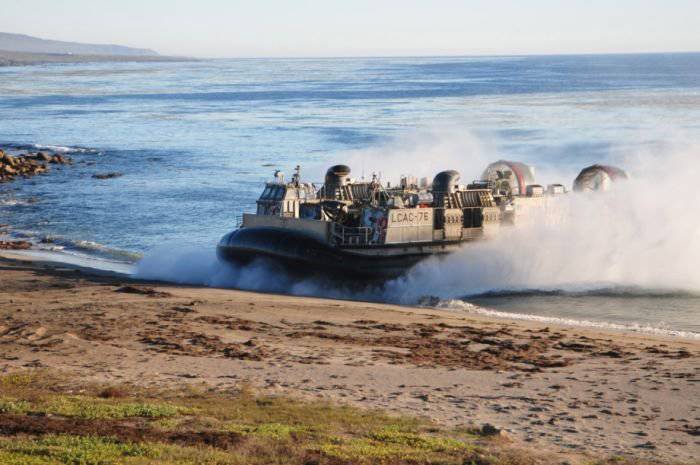
On July 6, 2012, a contract was signed with Textron Inc to develop a replacement approaching the end of its LCAC service life. The new landing craft SSC (Ship-to-Shore Connector) will be an evolutionary replacement for the existing fleet of hovercraft. SSC will enhance the tactical capabilities of over-the-horizon landing aids. They will have increased reliability and maintainability, will reduce the total cost of operation, and will also meet the growing requirements for the payload of the Maritime Expeditionary Battalion-2015 program. The program involves the construction of a total of 73 boats (one for testing and training and 72 for adoption). Deliveries are scheduled for the 2017 fiscal year with the adoption of the 2020 fiscal year.
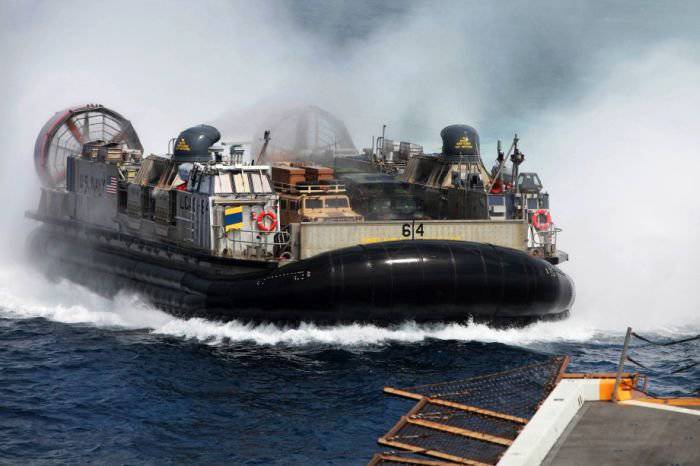
Performance characteristics:
Length without pad: 24.9 meter
Length with pad: 28 meters
Width without cushion: 14.2 meter
Width with pad: 14.6 meters
Height above the surface with a pillow: 5.8 meter
Height above the surface without a cushion: 7.8 meters
1.5 cushion height meter
Displacement: 88.6 tons empty; 173-185 tons with full load
Power plant: four Avco-Lycoming TF-40B gas turbines (2 for propulsion / 2 for generating lift), each with horsepower 3955
Propellers: 2 four bladed reversible propeller with an adjustable step diameter of 3.58 meter to propel; 4 fan diameter in 1.6 meters, centrifugal or mixed flow to create lift
Fuel capacity: 19,000 liters
Average fuel consumption: 3,700 liters per hour
Full load range: 200 miles at speeds in 40 knots or 300 miles at speeds in 35 knots (on 90 percent fuel)
Speed at full load with sea state in 2 points: 50 knots (92.6 km per hour)
Speed at full load with sea state in 3 points: 35 knots (64.8 km per hour)
Speed at full load on land: 25 knots (46.3 km per hour)
Load capacity: 68 tons (overloaded 75 tons)
Cargo deck: 20х8.2 meters, 168 sq.m
Crew: 5 people
Placement of crew and landing force: on the starboard side on the upper deck the commander, flight engineer, navigator, airborne commander and commander of the landing force, on the lower deck of the 7 paratroopers; on the left side on the upper deck loading specialist, on the lower deck mechanic and 16 paratroopers
Armament: 2 machine gun caliber 12.7 mm; Automatic 40-mm Mk-19 Mod3 grenade launcher; machine gun M-60
Navigation equipment: navigation radar Marconi LN 66 with power 25 kW, I band, satellite and inertial navigation systems
Radio: 2 UHF / VHF radio stations, HFD and portable radio stations
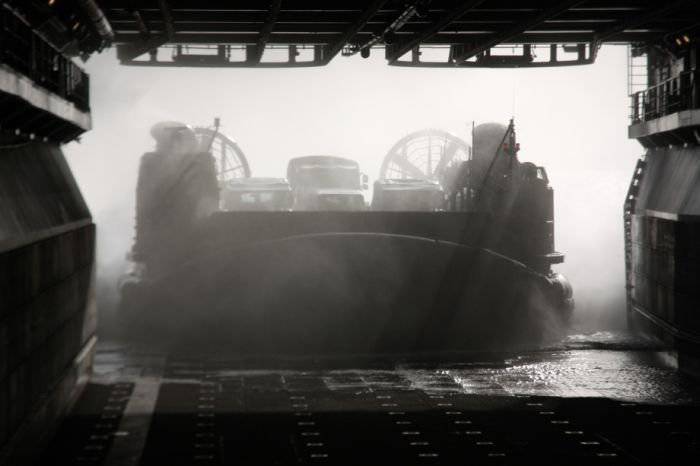
Availability of LCAC per day (out of a total of 54)
Day One - 52
Day Two - 49
Day Three - 46
Day Four - 43
Day Five - 40
Estimated opening hours: 16 hours per day
Exit time when transporting vehicles: 6 hours 8 minutes
Departure time for the carriage of goods: 8 hours 36 min
Number of exits per day when transporting vehicles: 2.6
Total: 104 output LCAC per day when using 40 LCAC
Number of exits per day when shipping goods: 1.86
Total: 74 output LCAC per day when using 40 LCAC
Marines: 145 Marines or 180 Civilians
Motor transport in one exit: 12 HMMWV / 4 BTR / 2 floating BMP / 1 tank M1A1 / 4 M923 / 2 5-ton M923 and 2 M198 and 2 truck
For the landing of the infantry regiment it is necessary:
269 HMMWV - 23 output
10 5-ton trucks - 3 output
For landing a tank battalion:
58 M1A1 - 58 Outputs
95 HMMWV - 8 Outputs
23 5-ton trucks - 6 outlets
8 fuel trucks - 4 output
For the landing of the BTR battalion:
110 BTR - 28 OUT
29 HMMWV - 3 output
23 5-ton trucks - 6 outlets
8 fuel trucks - 4 output
Possibility of basing on ships docks:
Class LSD 41 - 4 LCAC
Class LSD 36 - 3 LCAC
Class LHA 1 - 1 LCAC
Class LHD 1 - 3 LCAC
Class LPD 4 - 1 LCAC
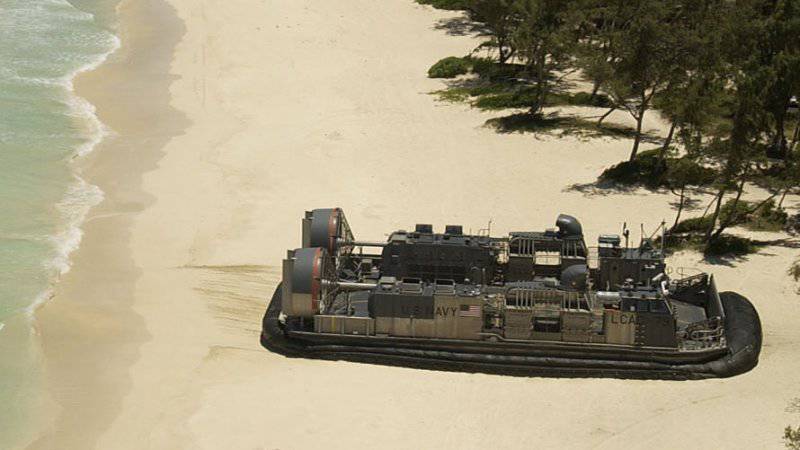
Information